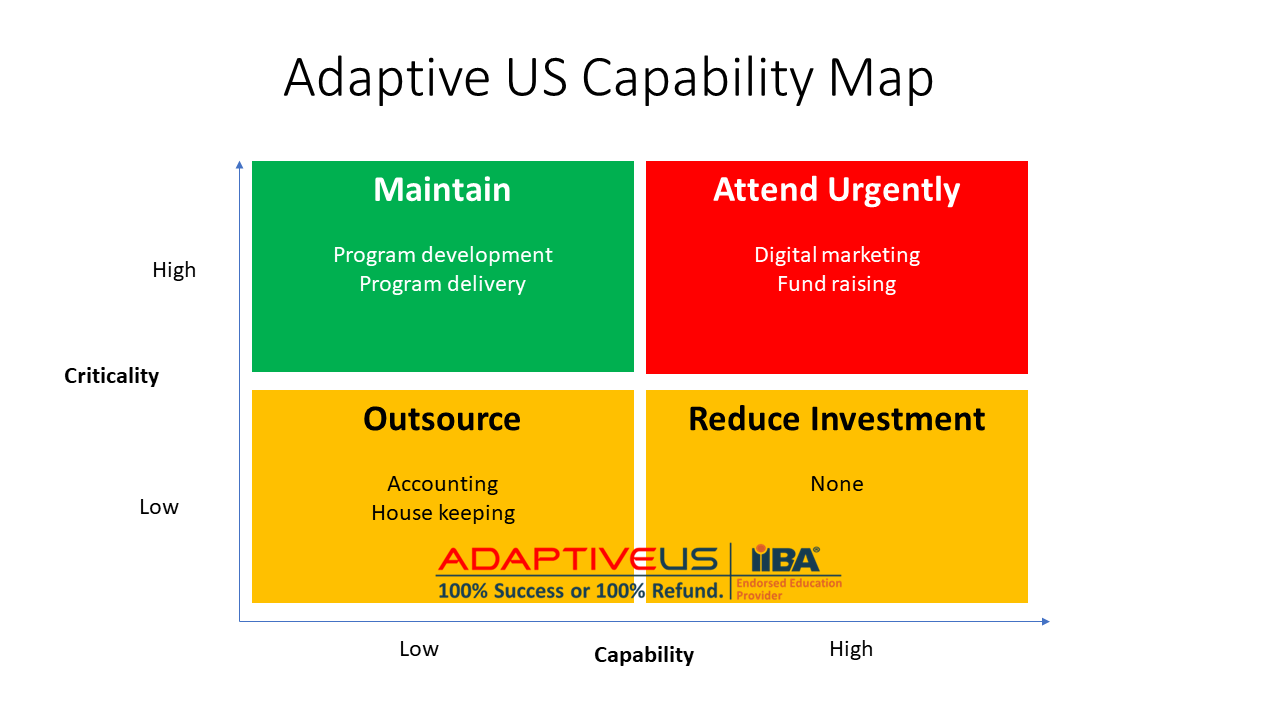Business Capability Analysis : What, Why and How
Introduction
Business capability analysis is one of the 50 techniques mentioned in the Business Analysis Body of Knowledge. It is an important technique for businesses to decide capabilities where the business needs to improve and invest.
In this blog, we will discuss about what is business capability, why business capability analysis is needed for organizations and how to perform business capability analysis.
What is Capability?
Even before we understand business capability, let's understand what is capability.
Capability is demonstrated ability, which means an organization or an individual has demonstrated ability to perform certain activities.
Say for example as a training organization, Adaptive has demonstrated its capability in terms of developing course curriculum, create content, delivering programs and getting its student certified. We can say that this is demonstrated ability because already more than 1500 business analysts have completed IIBA certifications through Adaptive, so that essentially tells that Adaptive has demonstrated its capability to perform business analysis trainings.
Organization can have many capabilities, such as new product or service design, capabilities to deliver products and services across different customer segments, capability to support their customers, ability to hire, ability to market etc. There are hundreds of capabilities that organizations possess. They need to focus on few of them in order to be successful in the market place.
Businesses need to understand which are critical capabilities for the organization. Based on the criticality, they need to assess how is the organization performing on those capabilities and then focus on certain capabilities which are essential for business growth and profitability. For example, if we look at Adaptive US as an example, the ability to develop training programs, deliver them well, market them well are extremely essential for it. However, accounting practices is not a capability that it would like to develop because that's not a service that Adaptive provides to its customers and that's not the focus area for the organization. It would rather rely on a partner to have this capability available to it rather than investing into the capabilities
Business capability analysis is usually done for an enterprise to assess what is it able to do which can result in business advantages or achieving its business objectives. This is done to assess performance, set goals and identify gaps. This helps in prioritizing investment. Capabilities may be assessed for performance and associated risks to identify specific performance gaps and prioritize investments. Capabilities do not describe how the performance or transformation is performed or the process part of it.
Capability map
A capability map provides visual representation of various capabilities and their performance levels. Only unique capabilities are presented in the organizational capability map. Similar capabilities existing across multiple lines of businesses do not find multiple places in the capability map.
Capability analysis should impact value by revenue enhancement or cost reduction or improving service or customer satisfaction or achieving compliance or positioning of the company. Capabilities are assessed for current and expected performance. Gap performance of capability is used as input for strategic planning. This analysis may be done across the organization or within different lines of businesses or units such as sales and marketing, customer service, production, post-delivery support etc. It's important to remember that capabilities do not have any inherent risks, however the non-performance of capabilities do cause risk.
Conducting Business Capability Analysis
Here are the steps to conduct Business Capability Analysis:
- Identify capabilities for the organization
- Prioritize them
- Place the critical capabilities in the 2 by 2 matrix as per their performance gaps
- Create action plan to improve capabilities which are critical and have high performance gap
Here is an example capability map for Adaptive US
A 2*2 grid or map of capability with criticality as depicted in the image below can quickly unveil the areas/capabilities that need to be taken up on priority.
Keen to learn all 50 Business Analysis Techniques?
You May Also Like
These Related Stories

Choosing Business Analysis Approach Without Losing Your Hair

Everything you want to know about the Business Analysis Profession




Comments (17)